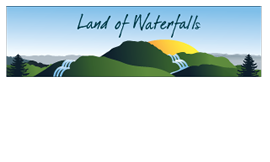Making moonshine was common practice and a
part of mountain culture during the 1800s. Nearly every home kept some form of
spirits—whiskey, wine, ale or brandy, available for themselves and
visitors. In addition, converting corn,
grain and fruit crops to liquor allowed for easier transport to market for much
needed cash. It was simply considered good
economics.
By the beginning of the 20th
century public opinion, influenced by groups like the Women’s Christian
Temperance Union, had shifted against alcohol consumption. The 18th Amendment made
production, importation, transportation and sale of alcohol a criminal offense
in the U.S. beginning on January 17, 1920 but in North Carolina it had been
illegal since May 26, 1908.
 |
| Tom Woods, Bert Freeman and two unidentified officials prepare to dump
moonshine off the old Wilson Bridge into the French Broad River. |
A search of the Sylvan Valley News and
Brevard News revealed articles on state and local efforts to end the distilling
trade. Headlines included “War on
Moonshiners”, “Whiskey and Its Evils” and “A Healthy Crusade”, all purporting
the ruinous effects of liquor. According
to a March 1926 news release North Carolina, South Carolina and Georgia
produced more moonshine than all other states combined.
Newspaper accounts regularly tell of deputies
seizing stills and making arrests throughout the county in Balsam Grove, Cedar
Mountain, Cherryfield, Connestee Falls, East Fork, Frozen Creek, Island Ford, Quebec,
Rich Mountain, Rosman, Reid’s Siding and See-Off. Raids ranged from a large outfit with a
capacity of 122 gallons and 800 gallons of beer captured by J.A. and
Coleman Galloway at Black Knob in the Little River section in 1914 to a travel
size “baby still” of twelve gallons nabbed by Officer Sims in 1926.
 |
| Brevard Police Chief Paul Fisher (center) and Officers Ray Buchanan and
Boyce Gillespie confiscated six gallons of moonshine from a stolen 1950 Ford. The driver was not apprehended. |
Stills were hidden deep in the woods or even
underground. In 1948 Sheriff Bert
Freeman uncovered a 100-gallon-a-day “factory” that had been operating just
outside of Brevard for three years. A
tunnel, over 200 feet in length, led to a large cave serving as the still room.
Fresh spring water was piped in from a half mile away and waste was piped out a
mile where it mixed with waste from Transylvania Tanning and went
unnoticed. The find was covered by news
agency across the state and as far away as San Francisco News, September 22,
1948.
Occasionally one of the community news
columns would taunt law enforcement with challenges like this one from the
September 25, 1929 Gloucester News, “Well, officers, we have plenty of
moonshine now, at least some of our men and boys are getting plenty it. If you will let us alone, we will have more
than we need and some to let you have in a few more weeks.”
Although prohibition ended with the repeal of
the 18th Amendment in 1930 many North Carolina counties, including
Transylvania County, remained dry long after the state legalized the sale of
alcohol in 1937.
Photographs and information for this column
are provided by the Rowell Bosse North Carolina Room, Transylvania County
Library. Visit the NC Room during regular library hours (Monday-Friday)
to learn more about our history and see additional photographs. For more
information, comments, or suggestions contact Marcy at [email protected]
or 828-884-1820.



